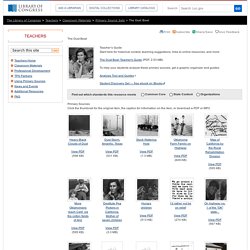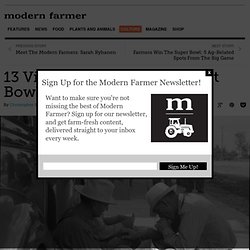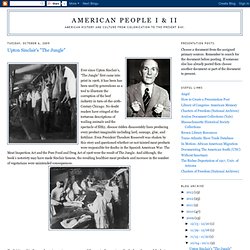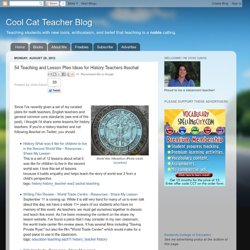

EDpuzzle. Learn about Great Depression Causes. The Dust Bowl - Primary Source Set. Skip navigation Library of Congress Teachers Suggestions enabled.

The Library of Congress > Teachers > Classroom Materials > Primary Source Sets > The Dust Bowl Print Subscribe Share/Save Give Feedback The Dust Bowl Teacher’s Guide Start here for historical context, teaching suggestions, links to online resources, and more: The Dust Bowl Teacher's Guide (PDF, 2.53 MB) To help your students analyze these primary sources, get a graphic organizer and guides: Analysis Tool and Guides Student Discovery Set — free ebook on iBooks Primary Sources Click the thumbnail for the original item, the caption for information on the item, or download a PDF or MP3. The resources in this primary source set are intended for classroom use.
To download audio and video players go to American Memory: How to View To view PDFs Connect with the Library All ways to connect Find Us On Subscribe & Comment Download & Play Questions Speech Enabled. 13 Vintage Photos of the Dust Bowl. By Christopher Surprenant on January 31, 2014 We spent some time browsing the Library of Congress, looking at photos from the Dust Bowl.

In the 1930s, overuse of land combined with years of drought combined to create massive dust storms that would literally block out the sun. Dust from these massive weather events, also known as “black blizzards,” reached as far as New York City and Washington, D.C. It also caused a mass migration of farmers, as many fled the arid plains for California, as chronicled in the John Steinbeck novel “The Grapes of Wrath.” A barren West Texas family farm affected by the drought, ca. Dust Bowl farmers of West Texas in Town, ca. One of the pioneer women of the Oklahoma Panhandle Dust Bowl, ca. Furrowing against the wind to check the drift of sand during the Dust Bowl, north of Dalhart, Texas, ca. Dust Bowl farmer raising fence to keep it from being buried under drifting sand in Cimarron, Oklahoma, ca. 1936.
Upton Sinclair's "The Jungle" Ever since Upton Sinclair’s, “The Jungle” first came into print in 1906, it has been has been used by generations as a tool to illustrate the corruption of the beef industry in turn-of-the-20th-Century Chicago.

No doubt readers have cringed at the torturous descriptions of wailing animals and the spectacle of filthy, disease ridden disassembly lines producing every product imaginable including lard, sausage, glue, and fertilizer. Even President Theodore Roosevelt was shaken by this story and questioned whether-or-not tainted meat products were responsible for deaths in the Spanish American War. The Meat Inspection Act and the Pure Food and Drug Act of 1906 were the result of The Jungle. And although, the book’s notoriety may have made Sinclair famous, the resulting healthier meat products and increase in the number of vegetarians were unintended consequences. n the book’s effectiveness as a work of propaganda may not have been completely realized. But it did more than that. Teachinghistory.org.
Stream Histor. History by Era. New Pearl Harbor Interactive from National Geographic. Stanford History Education Group. US History Scene. U.S. History: Free streaming history videos and activities. 54 Teaching and Lesson Plan Ideas for History Teachers #sschat. Since I've recently given a set of my curated plans for math teachers, English teachers and general common core standards (see end of this post), I thought I'd share some lessons for history teachers.

If you're a history teacher and not following #sschat on Twitter, you should. This is a set of 12 lessons about what it was like for children to live in the second world war. I love this set of lessons because it builds empathy and helps teach the story of world war 2 from a child's perspective. September 11 is coming up. While it is still very hard for many of us to even talk about this day, we have a whole 11+ years of our students who have no memory of this event. EyeWitness to History - history through the eyes of those who lived it.
U.S.+History+Project+Rubric. Smithsonian's History Explorer. Facts Summary Timeline. Westward Expansion summary: The story of the United States has always been one of westward expansion, beginning along the East Coast and continuing, often by leaps and bounds, until it reached the Pacific—what Theodore Roosevelt described as "the great leap Westward.

" American History. Presidential Timeline. Welcome to eHistory. Home: Digital Collections for the Classroom.